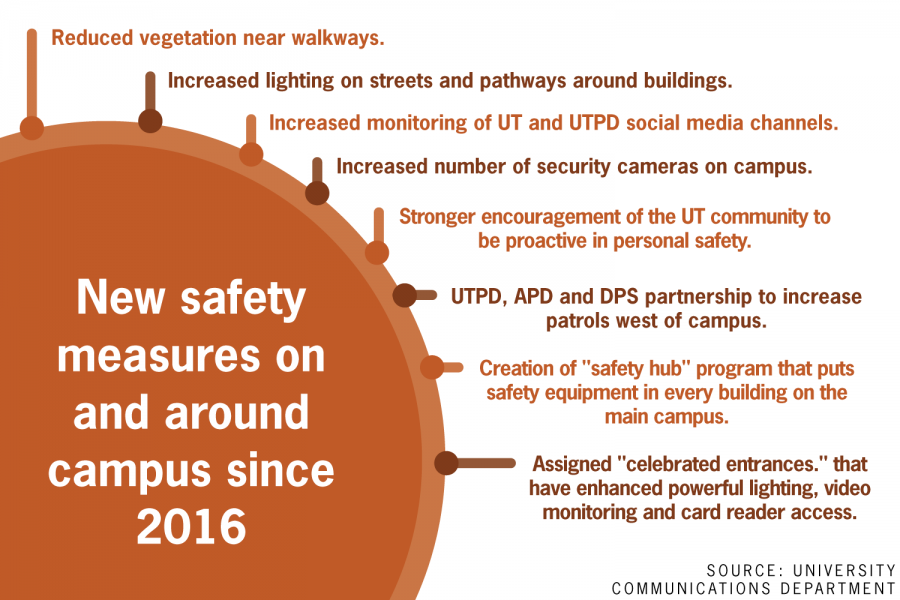5 years after murder of Haruka Weiser, students, parents, faculty evaluate UT’s public safety response
April 23, 2021
Editor’s Note: This article first appeared in the April 20 issue of The Daily Texan.
Trigger Warning: This story contains discussion of murder and sexual assault.
In the five years following the murder of freshman Haruka Weiser, UT has increased safety measures on and off campus to reduce crime risk. However, some advocates say additional steps could be taken to improve student safety.
Weiser was walking home from a class at 9:30 p.m. on April 3, 2016 when she was killed by Meechaiel Criner. Criner was sentenced to life in prison in 2018.
Since then, the Office of Campus Safety, University of Texas Police Department, Texas Department of Public Safety and other campus entities have partnered to create a plan for public safety on campus and in student housing areas.
Part of this plan included the hiring of 13 additional UTPD officers, acting UTPD chief Don Verett said. In addition, Verett said UTPD has worked to expand West Campus presence since 2013.
Alycia Castillo, policy analyst for the Texas Criminal Justice Coalition, said increased policing is not a comprehensive way to improve safety. Rather, preventative resources are what make people safer.
“We’ve increased our spending on corrections (and policing) year by year for many decades, and we’re not seeing that translate directly to less crime. There’s just no correlation there,” Castillo said.
Instead of policing, Castillo said the University should invest in mental health and medical support, which help with the root causes that lead to crimes.
“Personally, I am not for increased police presence or expanding (UTPD’s zone) only because of how harmful police presence can be to the BIPOC population,” said Vanessa Sayroo, future Not On My Campus president.
Other measures the City of Austin and UTPD have taken include:
- The launch of the LiveSafe at UT Austin app. This app allows people to “report suspicious activity, access important information, report an incident, request help, receive emergency notifications and virtually walk with friends.”
- Increased lighting on streets and pathways around buildings and in West Campus.
- Reducing vegetation blocking street lighting and walking paths.
- A safety presentation from UTPD during freshmen orientation for all students. This training outlines what to say on 911 calls and what resources are available.
- Installation of High Activity Location Observation Camera System in heavily populated areas.
- Other resources such as SureWalk and UT Night Rides.
Evidence showed Haruka was sexually assaulted at the time of her death. Student advocates from Not On My Campus said that while reactive measures to crime and sexual assault are important, preventative measures are what make students feel safe.
“Getting the conversation going is important and stopping interpersonal violence from happening is the goal in general, but there’s no way to do that without people being educated about interpersonal violence,” nursing junior Sayroo said.
SafeHorns member and UT parent Deanna Vereb said hearing about UT’s response to Haruka Weiser was disappointing to her.
“I would have liked to have seen more of an acknowledgement (of safety concerns),” Vereb said.
James Richardson, communications manager for Horns for Safety, said outreach efforts should focus on making sure students know what safety resources are available to them.
“The changes have been visible, … but the biggest thing that we can do from here on out is raise awareness for changes,” law student Richardson said.
The University said it is committed to improving safety and preventing further tragedies like Haruka’s death in a statement to The Daily Texan.
“We will never forget her, and we can honor her by walking together, looking out for each other, and living with the kind of joy she brought to life,” said Soncia Reagins-Lilly, vice president for Student Affairs and Dean of Students in the statement.



